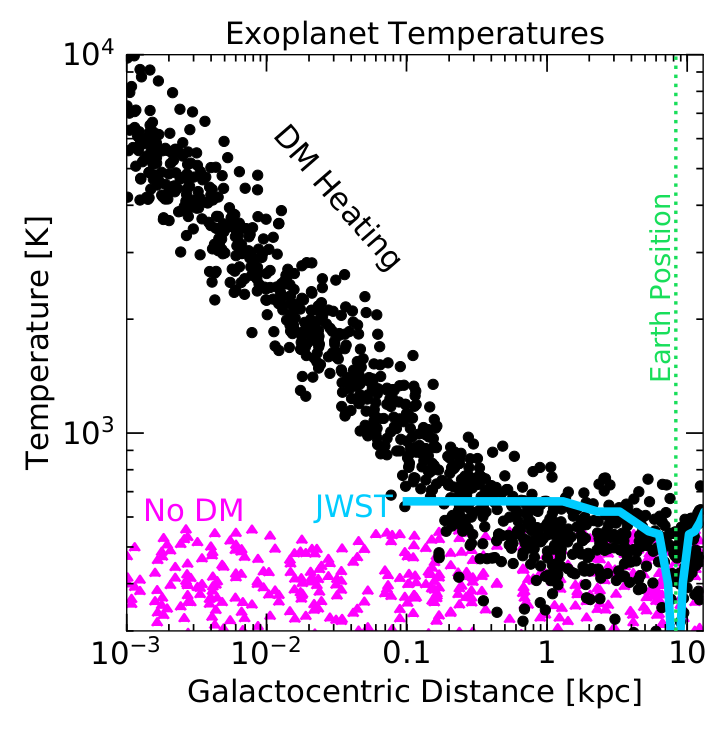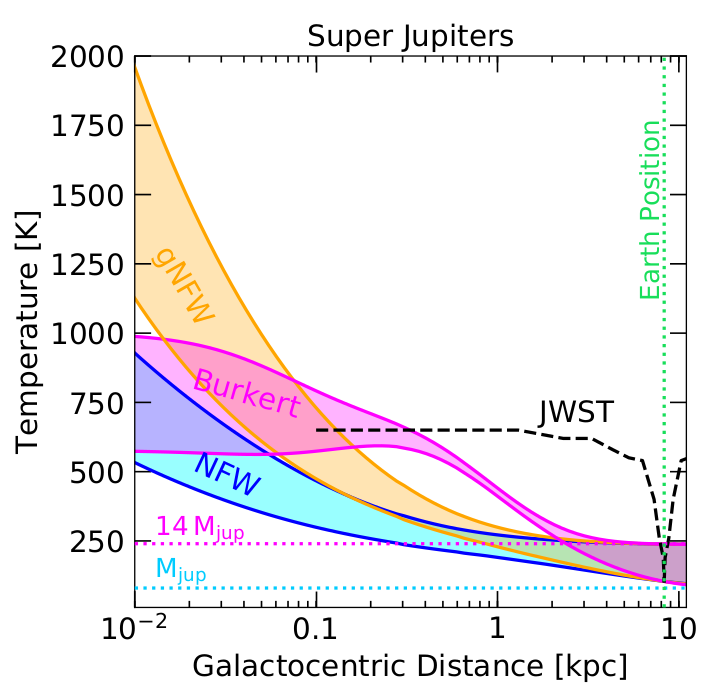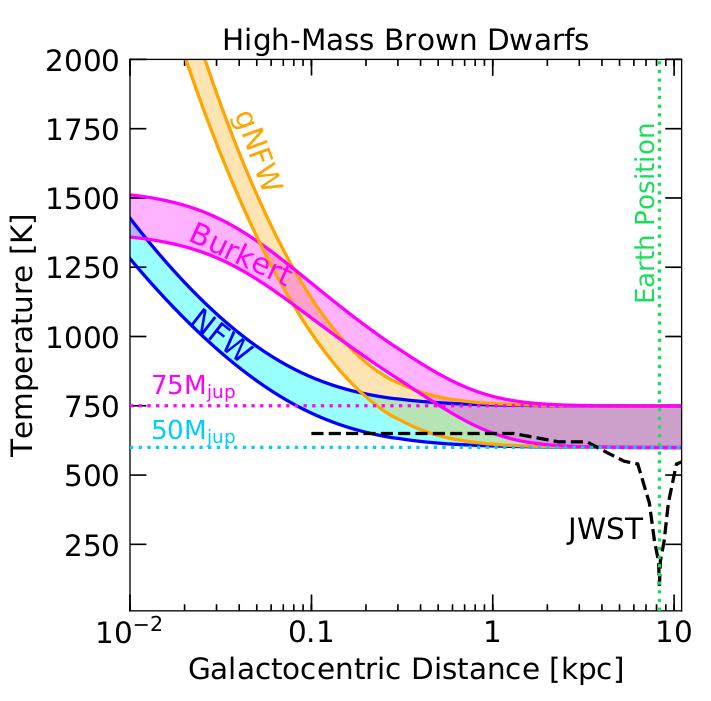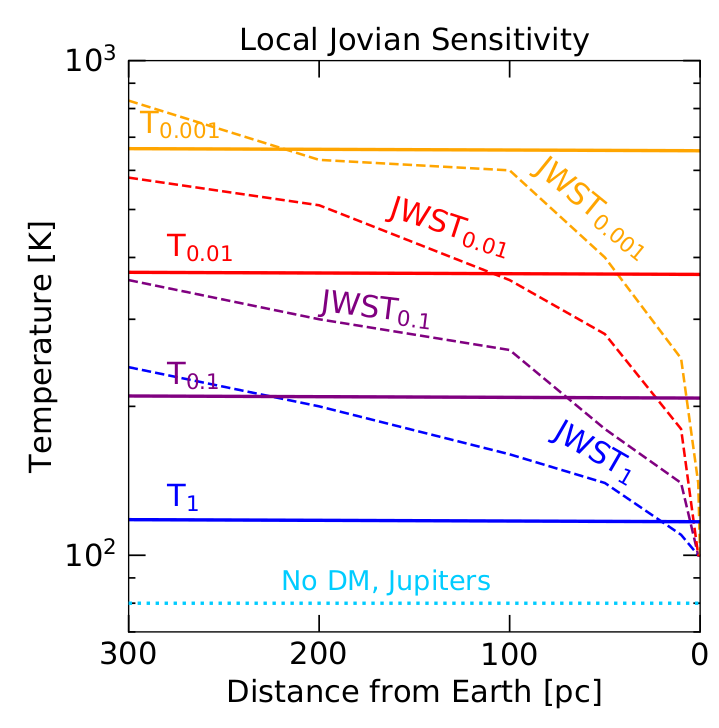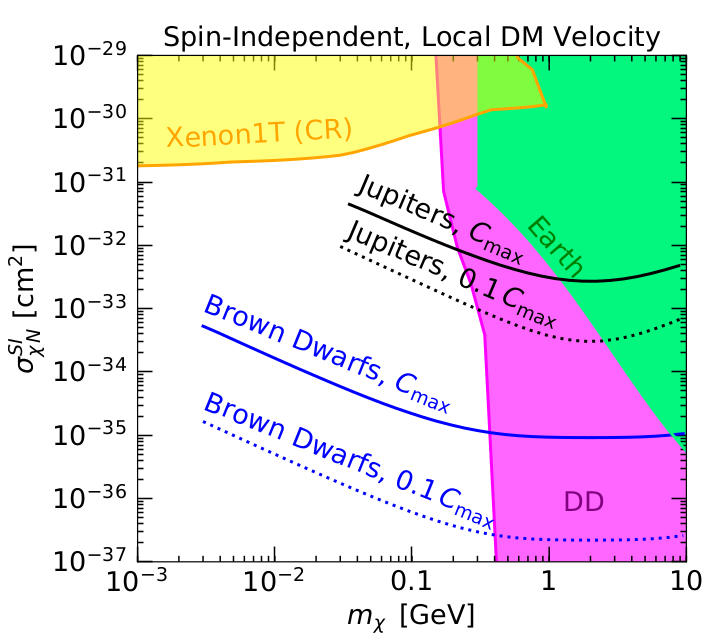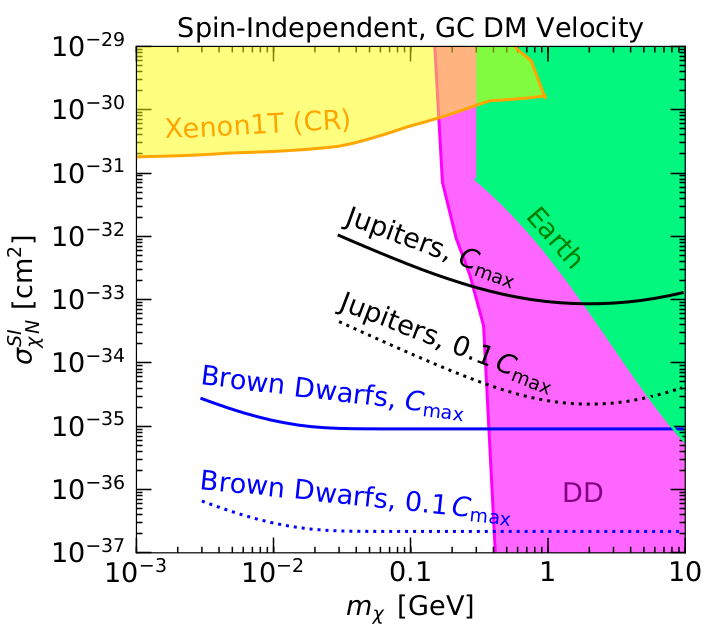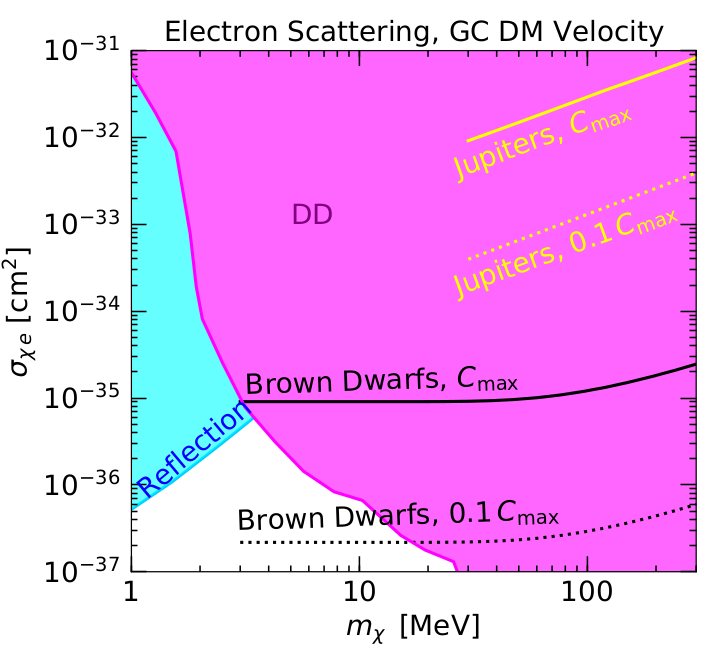New paper!
Exoplanets as New Sub-GeV Dark Matter Detectors
https://arxiv.org/abs/2010.00015
https://arxiv.org/abs/2010.... href="https://twitter.com/SmirnovJuri">@SmirnovJuri and I find that some of the billions of exoplanets peppered throughout our Galaxy can be used to discover Dark Matter! Thread:
Exoplanets as New Sub-GeV Dark Matter Detectors
https://arxiv.org/abs/2010.00015
Are we alone in the Universe? This question has driven wide-reaching interest in discovering a planet like our own. Regardless of whether or not we ever find alien life, the scientific advances from finding and understanding other planets will be enormous.
From a particle physics perspective, new celestial bodies provide a vast playground to discover new physics. Astrophysical systems have already been broadly used to probe new physics, including investigating the effects of gravitationally captured Dark Matter (DM).
This can occur if DM scatters with the system, loses energy, and becomes gravitationally bound. DM may then deposit its annihilation energy, increasing the temperature of the system.
Such DM annihilation heating has been considered in many objects, such as neutron stars and white dwarfs. The DM heat flow in other moons and planets has been considered, including Earth, Uranus, Neptune and Jupiter, Earth’s Luna, Jupiter’s Ganymede, as well as hot Jupiters.
Our paper explores the potential to discover DM using exoplanets – planets outside our solar system. We use the term “exoplanets” to refer to the broader class of all extra-solar planets (including rogue planets), as well as brown dwarfs, which exist at the planet-star boundary.
There are many advantages of using exoplanets to search for DM over other celestial bodies. These include:
1. A rapidly accelerating research program: Until 1992, we didn’t even know if exoplanets existed. Almost all exoplanets we now know were only discovered in the last decade, with the majority found in the last five years.
There are so many new and upcoming telescopes poised to make exciting new discoveries, including @NASA_TESS, @VRubinObs, @NASARoman, @ESAGaia, @NASAWebb, @luvoirtelescope + many more!
2. Enormous number of expected exoplanets: It is estimated that there are about 300 billion exoplanets in our Galaxy. While of course these won’t all be immediately found, even a small percentage leads to an *enormous* statistical advantage for understanding potential signals.
3. Much larger surface area than neutron stars: Another key proposed search for DM heating using infrared telescopes is for old, cold neutron stars. A typical neutron star has a radius of about 10 km, while exoplanets of interest to us have radii of about 50,000 – 200,000 km.
This means that exoplanets are (i) easier to find and (ii) its easier to measure their temperatures both locally and much further into the Galactic Center, where the DM density increases.
4. Low temperatures: Exoplanets can be very cold, and can exist very far in large orbits from any host star to which they may be bound. They can even go *rogue*, floating free from any parent star.
As the low temperatures allow for a clearer signal over background for DM heating, exoplanets are advantageous over fuel-burning stars. Furthermore, their low core temperatures can prevent lower DM evaporation, providing new sensitivity to MeV-scale DM.
In our paper, we exploit all these features to identify new searches for DM in exoplanets. We establish two different searches: one for distant exoplanets and one for local exoplanets.
where this is an assortment of exoplanet masses at varying galactic radii. The black dots are exoplanet temperature expectations with DM heating. The pink triangles show the expected background internal heat of the exoplanets.
The dashed line shows the minimum telescope sensitivity to these temperatures, using the James Webb Space Telescope ( @NASAWebb). Temperatures above that line can in principle be probed.
Distant exoplanets can be used to map the Galactic DM density, given sufficient statistics and telescope sensitivity. This is seen by the uptick of many hot exoplanets, scaling with the DM density.
Of all the types of exoplanets, our ideal classes of exoplanets are Jupiters (with mass and radius about that of Jupiter), which extend into Super-Jupiters, as well as brown dwarfs, which have roughly 14-75 Jupiter masses.
To determine the DM-exoplanet heating, we considered a few different different DM density and velocity profiles: an NFW and a generalized NFW (gNFW) profile, and a Burkert profile, which all produce different predictions for DM-heating.
To see the predictions for various profiles and exoplanet masses, we break our results up into mass categories. For the Jupiters - Super Jupiters, we get as a function of distance to the Galactic Center:
where the shaded regions cover the range of DM-heated temperatures for varying Super Jupiter masses (highest mass at the top, lowest mass at the bottom). The dotted lines are predictions without DM.
And on the higher mass end, for the highest-mass brown dwarfs:
And on the higher mass end, for the highest-mass brown dwarfs:
Comparing with the JWST sensitivity, it looks like this is indeed a detectable effect! For the Super-Jupiters, only some DM profiles can be well-probed for the distant exoplanets. The higher-mass brown dwarfs are clearly a better target for some profiles, for the distant search.
The Jupiters are more advantageous for local searches, as they have lower expected internal heat, and require less DM heating to outperform backgrounds. Of course, in the local position, the DM density is lower, so less DM-heating occurs.
Zooming in, for the local searches using Jupiters, we get the following temperatures and JWST estimated sensitivities:
The 1,0.1,0.01,0.001 numbers correspond to varying planetary emissivities. This is simply considering how efficiently the planet is trapping heat (like a greenhouse effect).
The telescope sensitivities vary in each case here (compare solid with dashed for a given label), because the spectral flux ends up looking different with emissivity. (We didn& #39;t show this effect for the distant searches, instead only showing the emissivities of 1 there.)
Assuming the exoplanet temperatures can be sufficiently measured over their expected background temperature, we can also determine sensitivities to the DM scattering cross section in the exoplanet.
where the solid lines are for when all DM is captured (corresponding to maximal heating), while if 10% of the capture rate is achieved, the dotted limits would apply (corresponding to a lower amount of heating).
The "Jupiters" lines are for exoplanets with a mass and radius of Jupiter, the "Brown Dwarfs" lines are for masses up to 75 Jupiters. Exoplanets with intermediate masses would lie between these lines.
The shaded regions show existing complementary constraints. DD is a compliation of direct detection constraints, Earth is from DM-Earth heating, and Xenon1T (CR) is from boosted cosmic rays.
We also get a bit of new sensitivity to DM-electron scattering, in the case that 10% capture rates can be probed:
For both the DM-proton and DM-electron plots,the sensitivity region shown would be all filled in as a constraint if a sufficiently cold Jupiter or brown dwarf were measured. For instead discovery of a DM-heating signal, the DM parameters would lie somewhere above the lines shown.
We see that exoplanets can provide a new probe of MeV-scale DM, with sensitivities stronger than other experiments by up to 6 orders of magnitude! This is a new way to discover (or exclude) light DM.
Going forward, it will be important to investigate detailed simulations of temperature curves as a function of age for exoplanets; taking into account the presence of DM heating + planetary effects will be required to make more precise statements than the estimates we presented.
The exoplanet program is rapidly accelerating. Amongst the billions of new worlds in our Galaxy, many are waiting to reveal their surprises. Unexpected discoveries are inevitable, and numerous new telescopes with cutting-edge technology are ready to make them.
Hoping now for a successful launch of JWST next year, and the continued success of the many exoplanet telescopes!
Lastly, shout out to my awesome collaborator on this project, @SmirnovJuri! Neither of us knew almost anything about exoplanets before starting this project, so it has been lots of fun to venture into this very different yet exciting (exo-)world.

 Read on Twitter
Read on Twitter